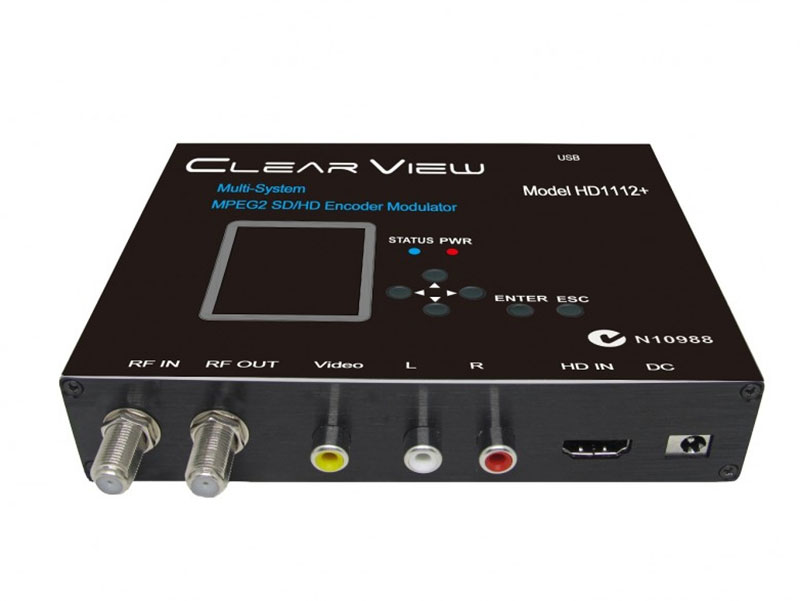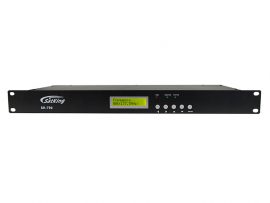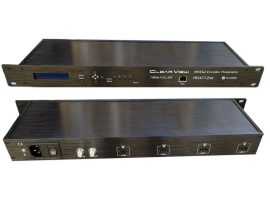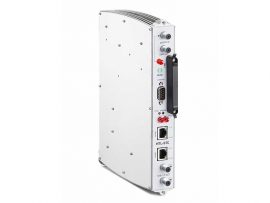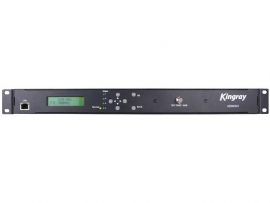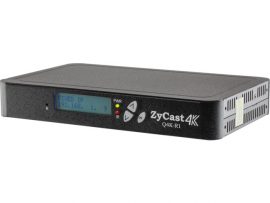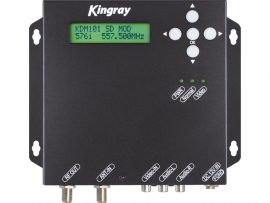Description
Clearview HD1112+ MPEG2 Single SD/HD DVBT Modulator
This Clearview HD1112+ Modulator can convert an AV or HDMI signal into an DVB-T MPEG2 RF signal.
Features
- AV or HDMI to HDTV Modulator up to 1080p
- Supports multi digital TV standard (DVB-T, DVB-C, DTMB, ISDB-T)
- Easy to use colour LCD panel and 6 key buttons.
- Plus Web GUI Control
- Supports AC3 and AAC
- Supports Wall-mount type
- Optimized for cascading multiple modulators on your coaxial network
Specifications
| General | |||||
| Power | 12V1A, Screw lock type adapter. 100-240VAC Adaptor included | ||||
| Dimension | mm | 151 x 115 x 32 | |||
| Weight | grams | 700 | |||
| AV and HDMI Input | |||||
| Video resolution | NTSC, PAL
720p, 1080i, 1080p |
||||
| Video encoding | MPEG2 | ||||
| Audio encoding | MPEG1 Layer II / AAC /AC3 | ||||
| RF Output | |||||
| Frequency Range | MHz | 50-950, 1K steps | |||
| Output level | dBμV | 100 (70-100 adjustable) | |||
| MER | dB | Typical. > 35 | |||
| Output Settings | |||||
| Standard | DVB-T | DVB-C | DTMB | ISDB-T | |
| Bandwidth | 6, 7, 8 | 8 | 8 | 6 | |
|
Constellation |
QPSK 16QAM 64QAM |
16QAM
32QAM 64QAM 128QAM 256QAM |
GB20600-2006 |
QPSK 16QAM 64QAM |
|
|
Other setting |
Code rate
Guard Interval FFT |
Symbol rate |
Code rate
Guard Interval FFT |
||
| Menu Configuration | |||||
| Basic | Video Input select / RF output type / RF range/ LCN, Key ID/ Service Name | ||||
| Advanced | Video & Audio/ SID / PMT, VPID, APID/ NIT, ONID/ PDS/ TS ID/ RF output attenuation | ||||
What’s the difference between MPEG2 and MPEG4?
DVB-T (Digital Video Broadcasting – Terrestrial) is a standard for transmitting digital television signals over terrestrial (over-the-air) broadcast networks. MPEG-2 and MPEG-4 are video compression standards used in DVB-T to encode the video content.
- DVB-T MPEG-2: DVB-T MPEG-2 refers to the use of the MPEG-2 video compression standard within the DVB-T system. MPEG-2 is an older compression standard that was widely used for digital television broadcasting before the introduction of MPEG-4. It offers moderate compression efficiency, which means it requires more bandwidth to transmit video compared to MPEG-4 for the same quality. MPEG-2 provides good video quality, especially for standard definition (SD) content, and it is still compatible with many older television sets and receivers.
- DVB-T MPEG-4: DVB-T MPEG-4, on the other hand, uses the more advanced MPEG-4 video compression standard. MPEG-4 offers better compression efficiency, allowing broadcasters to transmit higher quality video using less bandwidth compared to MPEG-2. This is especially beneficial for high-definition (HD) and other bandwidth-intensive content. MPEG-4 can deliver superior video quality with the same amount of data or equivalent video quality with less data compared to MPEG-2. However, MPEG-4 requires more processing power for encoding and decoding, which means older television sets or receivers may not support MPEG-4 without a compatible decoder.
In summary, the main difference between DVB-T MPEG-2 and DVB-T MPEG-4 lies in the video compression standard used. MPEG-2 is an older standard with moderate compression efficiency but good compatibility with older devices, while MPEG-4 is a more advanced standard offering better compression efficiency for higher quality video but requiring more processing power and compatibility considerations.
How can I tell if my TV is MPEG2 or MPEG4?
Early digital TVs sold in Australia had MPEG2 DVB-T Tuners. Later models have progressed to MPEG4. Any MPEG4 TV will work with MPEG2 signals. However MPEG2 TVs will not work with MPEG4 signals including those from MPEG4 modulators.
It is often difficult to see from the TV’s specifications if the hardware is MPEG2 or MPEG4. The easiest way is to test the TV with a normal broadcast antenna signal. New HD Channels such as Channel 70 (7HD) or Channel 31 (SBS Viceland HD) are broadcast in MPEG4. If your TV produces a black picture or an error message such as FORMAT NOT SUPPORTED, then this TV is MPEG2 only.
To correct a MPEG2 only TV, a new DVBT Set Top Box can be used to tune the RF signal and convert it to a HDMI input on the TV.

